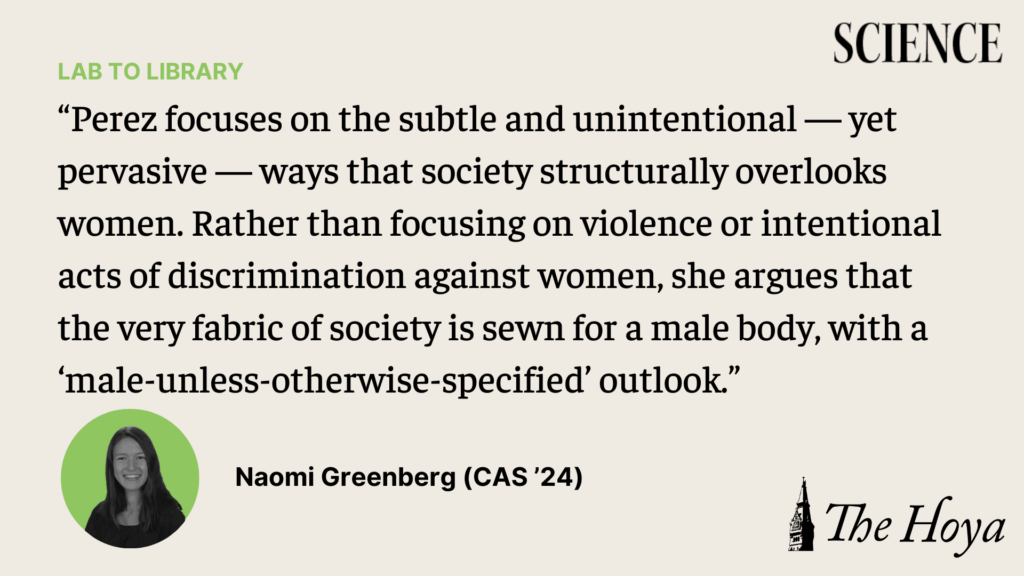When children draw scientists, 72% draw men. When archeologists find ancient human bones, they usually assume they belong to a man, long before there is any proof. And when medical school textbooks choose to represent a human body, they almost always depict a male physique.
These facts motivate “Invisible Women: Exposing Data Bias in a World Designed for Men,” a book by Caroline Criado Perez, a British feminist, journalist and activist. The innovative 2019 text explores facts and figures from daily life, the workplace, product design, health care and public life, using facts to highlight the modern gender gap. Given how much Perez’s work changed my views of gendered data in the modern age, I believe this book should be required reading for anyone who cares about science, technology, economics, engineering and innovation.
Perez focuses on the subtle and unintentional — yet pervasive — ways that society structurally overlooks women. Rather than focusing on violence or intentional acts of discrimination against women, she argues that the very fabric of society is sewn for a male body, with a “male-unless-otherwise-specified” outlook. By collecting and sharing data, she argues, individuals can help make women visible in numbers and society.
“Seeing men as the human default is fundamental to the structure of human society,” Perez writes in the introduction to “Invisible Women.”
Some of the examples of gender discrimination Perez uses struck me at first as harmless inconveniences. But now, I believe these differences are necessary to grapple with when thinking about how to design equitable technology.
For example, why do men’s and women’s bathrooms take up the same footprint if urinals are so much more efficient and would therefore require less space? Why are iPhones designed for the average man’s hand dimensions, meaning they are much too large to fit comfortably in most women’s hands, let alone pockets? And why is voice recognition technology many times more likely to correctly interpret a man’s voice than a woman’s voice?
Other examples that Perez highlights have more catastrophic consequences for fields like health care, like the fact that the symptoms for heart attacks are much less likely to be noticed in women or the fact that most car crash dummies are built on male dimensions, making women involved in car crashes 47% more likely to be seriously injured.
All these examples highlight that data isn’t as objective as it might seem. Data scientists often fail to collect sex-disaggregated data, which can demonstrate how something might unequally affect men and women. And often, metrics we think are ungendered — such as GDP — actually fail to account for an entire category of people. In fact, women do 75% of the world’s unpaid care work, amounting to trillions of dollars in value that is not factored into a country’s GDP.
Surrounding these fascinating stories, Perez seamlessly weaves in numbers with anecdotes. In between topics, she references the shared frustrations of living in a male-biased society that women around the world feel.
But — and men, breathe a sigh of relief — after building up the reader’s anger, she directs it toward solutions rather than letting discontentment simmer or be directed toward individuals.
“Private motivations are, to a certain extent, irrelevant. What matters is the pattern,” Perez writes.
For its informative content, its artful storytelling and its motivational message, “Invisible Women” is a must-read science book. Armed with data showing how society’s finest innovations have failed women, Perez shows us that society has the power to pinpoint issues, acknowledge them and, eventually, fix them.









